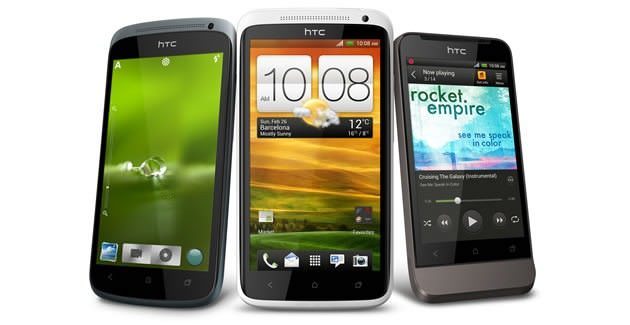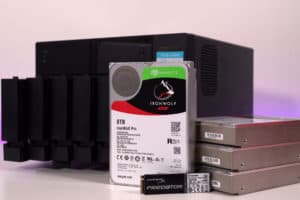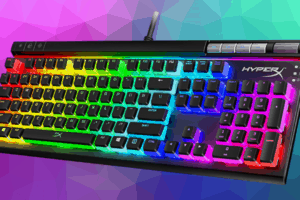“Dear HTC,”
Last year was what you could call a game-changer for you guys… Will 2012 be a year of software and hardware innovation?
On one hand, you were again recognized for being one of the top Android manufacturers in the world. Profits were soaring until late in the year and every consumer who bought your products thought they were more than adequate enough for the job. But then again, all success meets with an inevitable force, and thus began your second-half financial woes.
To put it simply: you became comfortable. Others would even say lazy. But churning out that beautifully-constructed HTC Titan brought me back to the fact that your industrial design for mobile phones was what gave your company itsd DNA. It’s what made you Taiwan’s number one international brand, even over companies like Acer. Heck, HTC was the brains behind the first ever Android device to be released in the US in the T-Mobile G1 (which I stood in line for on October 22nd, 2008).
Back then, HTC was focused on competing against the folks in Cupertino; but things have changed, HTC. It’s no longer about competing with Apple, it’s about taking a stake in this Android cesspool of OEMs and big names such as Samsung and Motorola. Year after year, you showed us how hardware with unfinished software (in the Android operating system) could still make for a compelling and innovative device. You made a big enough mark in the mobile ecosystem to be a part of the first Google-designed phone in the Nexus One. The money kept rolling in and your engineers kept on engineering.
Maybe it was the media attention and the numerous accolades which tech sites where giving you guys. Maybe Samsung’s TouchWiz interface put you in a comfort-zone just by looking at it. Nevertheless, the facts and bank accounts have shown your complacency over the past few months. You made a promise to jump-start the HTC brand in 2012. You made a promise to stop manufacturing pointless smart phones for the sake of quantity over quality. Promises.
Did you keep them with the release of your cleverly-named One series?” Let’s dig in…
HTC One X (Review AT&T version.)
This behemoth of a device rocks a 4.7 inch, 1280 x 720 display with the latest and greatest SuperLCD 2 technology. For people who don’t know what that actually means, it has higher viewing angles, an almost complete 180 degree viewing angle, a brighter screen, and richer colors. Super AMOLED Plus still has deeper blacks, sadly. One downside picky people may find is that the screen size does make this device quite large, but odds are, if you’re reading this article, it doesn’t disturb you in the slightest.
It features a beautifully crafted poly-carbonate uni-body casing that supposedly has the ruggedness of metal, but still keeps a lightweight feel to it. HTC certainly wasn’t the first company to incorporate the material into their handsets. As a matter of fact, the Nokia Lumia 800 (Review) was the first phone is recent memory to do this, which was released only late last year. Even the glass-wrapping method Nokia uses on the Nokia Lumia 800 found it’s way onto the HTC One X. Nonetheless, it does live up to the hype. It feels unlike anything else on the market right now.
As of the writing of this article, there have been multiple complaints of this “ruggedness of metal material” actually chipping, seemingly on its own. Whether this problem is isolated to just a few devices is yet to be seen.
There’s a 1.3-megapixel front-facing camera and a double-row of drilled speaker perforations; behind lurks a notification LED. On the left edge is the micro USB port while the volume rocker is on the right; the power/lock button is on the top edge. You also get a 3.5mm headphone jack and a row of five pins on the lower right hand corner of the rear panel for use with the optional docking cradle. Why they continuously incorporate these pins on devices is a mystery to me. It’s a gimmick feature. The accessories needed to actually use them don’t come out until months after the release, sometimes never.
The main attraction for this device besides it’s screen is the newly improved camera. An 8-megapixel unit which packs autofocus, an F2.0 aperture, 28mm lens, a backside-illuminated sensor, “smart” LED flash and support for 1080p HD video recording. Real-world images taken with the device give credence to what HTC has claimed it’s capable of doing. That customized sensor they put inside the device was worth it after all.
HTC One S: (Hands-On Video T-Mobile Version)
The second device in the line up,the HTC One S, is a pretty awesome runner up. With its 4.3 inch Super Amoled display, dual-core 1.5ghz snapdragon processor, 8 megapixel camera (1080p HD recording) and cleverly crafted industrial design, it’s no slouch in terms of a powerful smartphone. The One S is very similar to the One X in terms of specs. The only major differences between the two would be the screen resolution (540×960 pixels to 720×1280 pixels) , screen size (4.3 to 4.7 inches), screen technology (Super Amoled vs SuperLCD 2), internal storage (16gb to 32gb), and the processors, which I’ll get to in a little bit . I’m using the international versions of the device for my comparison since American versions usually cripple some aspect of the device. Quad-core chipsets have become the new rave of 2012.. Nvidia ‘s Tegra 3 chip has brought attention yet again to the great innovation we are witnessing in the mobile space. Most people see a a dual-core chipset (which the One S has) and automatically assume it is inferior Nvidia’s new offering of quad-cores. Don’t let spec junky mania fool you folks. Qualcomm’s S4 dual-core processor is just as powerful if not better than Nvidia’s offering. With benchmarks that rival its competitor, increased battery life, and already having LTE capability makes the One S seemingly neck and neck with the One X. HTC has really outdone themselves if a device of this caliber is their mid-range offering.
HTC One V:(Hands-On Video)
The HTC One V is the third and final device in HTC’s mission to bring their name back to glory. The One V is a lower-tier device with modest specs that for a first time smartphone buyer will be more than adequate to get the job done. The industrial design of the device was inspired by the legendary, HTC Legend ( no pun intended) or better known as the HTC G2. It has the infamous chin that literally serves no purpose but to look different and rather weird. The guts of the device contain an S2 Snapdragon processor, 3.7 inch Super LCD Screen (which is somewhat grainy in quality), an abysmal 1gb of internal storage, and admirable 5 megapixel camera. Even tho its specs don’t jump at the average tech geek, it chugs along quite fine. The user experience, even combined with HTC’s skin, isn’t crippled at all. The image processing and browser seem to be the only parts of the software that have taken a hit. But its anodized shell should make up for those shortcomings. All in all , the One S is a solid smartphone for any consumers seeking something powerful, yet affordable.
LTE
Even though I’m not personally an Android user, this had me grinding my gears a bit. I’m no spec junky, but Nvidia REALLY needs to step it up with the LTE support. The insides of the European HTC One X hold a NVIDIA 1.5GHz quad-core (penta-core, really) Tegra 3 chipset, paired with 1GB of RAM and 32GB of non-expandable storage. NVIDIA insists that its 4+1 core design means performance won’t outweigh longevity. It packs a 1800mah battery that’s non-removable. You be the judge of that one folks. Due to Nvidia not incorporating LTE into its chip until late 2012/early 2013, the North American version will come with a dual-core Qualcomm Snapdragon S4 chipset powering it’s gut.
This processor is no slouch by any means. You won’t even see or feel the difference in user experience to be quite honest. It does, however, diminish the pure processing power the device was originally capable of. Connectivity includes the usual WiFi a/b/g/n, Bluetooth 4.0 with high-quality audio support, and NFC. The micro USB port supports MHL-HDMI with the appropriate adapter (that’s not included), GPS, gyroscope, digital compass, proximity, ambient light sensors, and G-Sensor.
When it comes to HTC’s promise of putting innovation back on the totem pole, they didn’t disappoint. The HTC One X from a hardware perspective is in a league of its own and can only spawn more innovation from the likes of HTC in the near future.
HTC Sense 4
Those words have haunted pure Android-experience users for the past couple years and you can’t blame them. Skinning Android has become the new bloat-ware for the entire operating system. There was a time when Android actually needed these “enhancements” to function efficiently and excel in UX. It was, and still is, an unfinished product. It has come a long way since its entry into the mobile space, however.
Adding Matias Duarte to the team at Google has brought some fast and necessary innovation to the operating system and even I must admit, has brought me back (or at the very least, tempted me) to become an Android user once again. When HTC Sense for Android was first announced, it brought eye-candy to the platform that turned heads. For some odd reason, HTC figured eye-candy was all they needed to differentiate themselves from the pack of Android OEM’s. It did, but in the worst possible way.
Device after device, HTC Sense bogged down the OS more and more until the user experience became the sole reason why consumers didn’t want to buy their devices. It was yet another thing HTC said it would fix in its new initiative of re-awakening its DNA. The HTC One X comes pre-loaded with Android 4.0 “Ice Cream Sandwich” out of the box. HTC decided to stick with the old custom skin in this model, but it’s being called HTC Sense 4.0 nowadays.
Gone are the eye-catching but GPU-sapping 3D home screen widgets of last year, replaced with a cleaner looking interface more in line with Ice Cream Sandwich. The app launcher controls and other buttons redesigned, and even the app-switcher UI has been replaced. A Cover-Flow-style carousel of running software instead of the basic thumbnail previews. I can’t help but feel that HTC is still crippling the user experience. Sense has changed, there’s no doubting that, but its change is more towards minimizing the look of what’s still truly going on with Sense.
They’ve down-sized the already-over-sized widgets and icons. Making the decision to use a single Cover-Flow view of the apps running in the background is beyond idiotic. The original system already baked into Ice Cream Sandwich gives a four-application view of what’s running in the background. Now don’t get me wrong, I understand a manufacturer has to have an element to their product in order to differentiate themselves from the competition, but you’re dealing with an open-source platform, HTC. Your credo should be incorporated into the hardware! The route you’ve taken means software can’t be your forte! Things aren’t all bad though, HTC is learning from its mistakes. The camera software, on top of making an effort to change Sense, is a valiant-enough effort to keep consumers interested in their devices. I can only hope HTC continues to listen to consumers from here on out in order to put a dent in those Samsung sales.
The Bad? When you get down to it, has HTC kept their promise of bringing forth a new dawn of devices that are compelling to the consumer? Yes and No. HTC’s push in the hardware department is nothing short of amazing. They aren’t only borrowing key components from companies like Nokia (who wouldn’t), they’re also doing what’s necessary to be at the peak of tech innovation. The guys in the lab back in Taiwan have created a device that can spawn a new era of Android devices that work seamlessly with its counterpart in software. Where HTC falls short in bridging the gap of perfection is Sense. Pride can be harmful not only to everyday people, but huge corporations such as HTC.
Just look at RIM. RIM kept it’s head up it’s ass for far too long and they will pay the price for it.
They pretty much are right now, come to think of it. Your strengths can only overshadow your weaknesses for so long until they’re no longer as relevant as they once were.
HTC has to embrace the idea of giving people the option to want Sense. Since it’s no longer a necessity, the next best thing can only be choice. Once HTC implements this into its business DNA they have a chance to be the #1 Android OEM again.












Comments